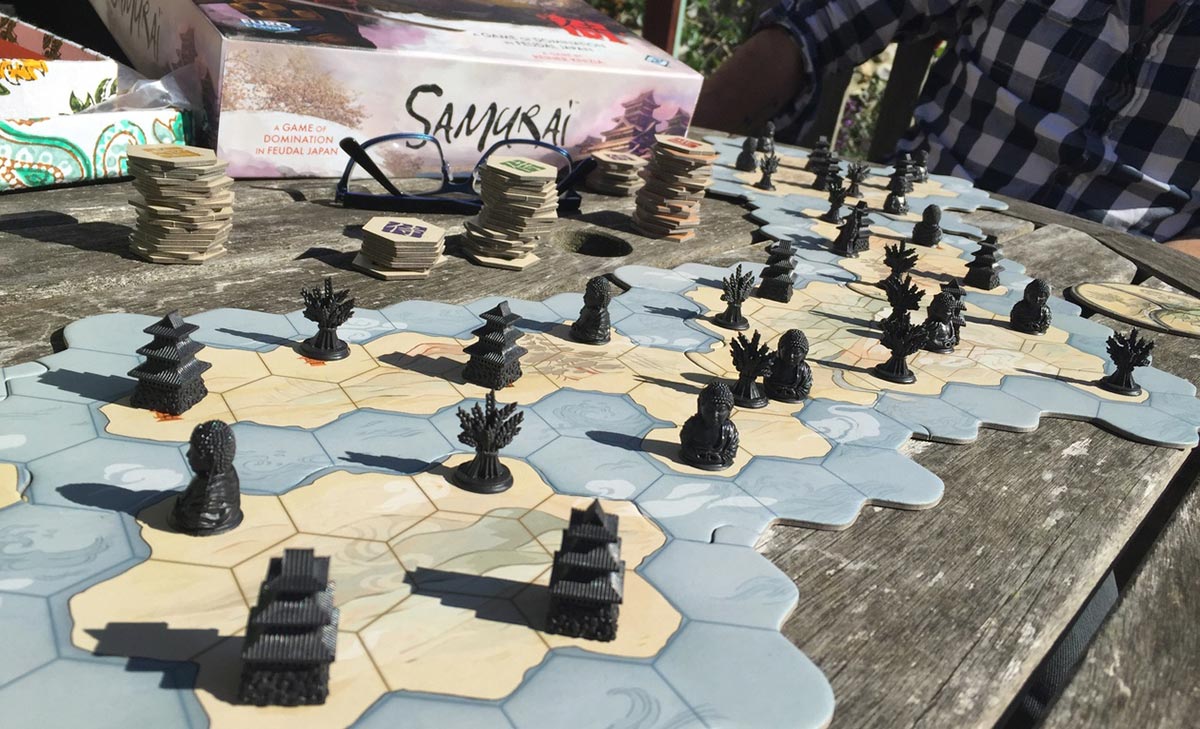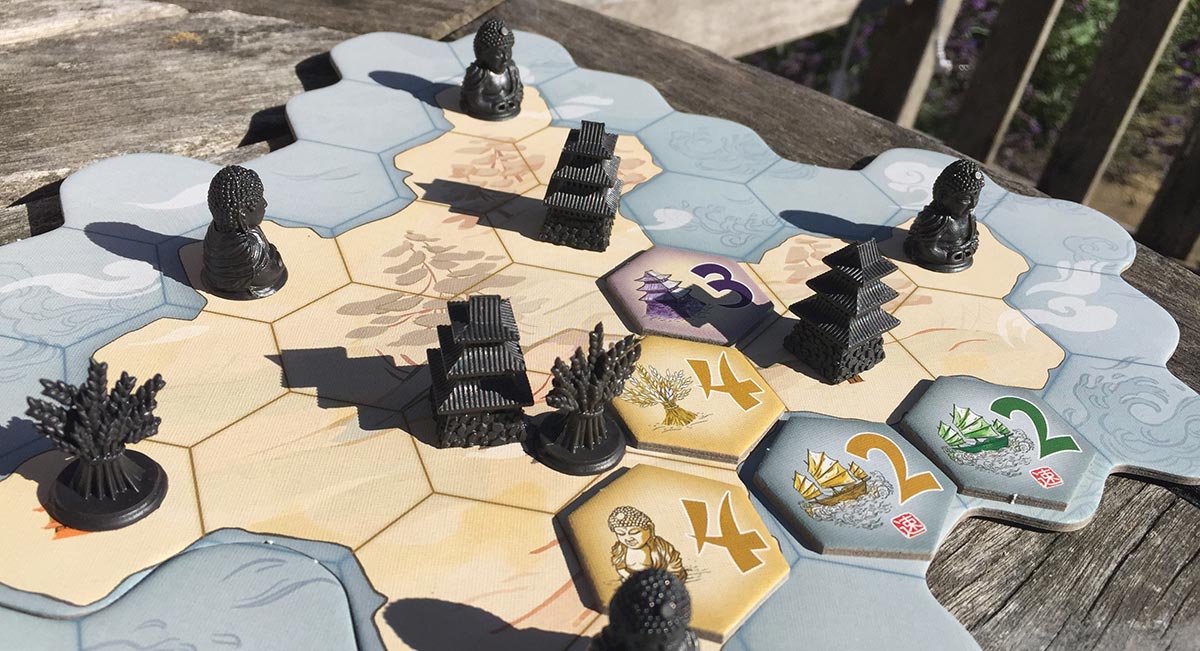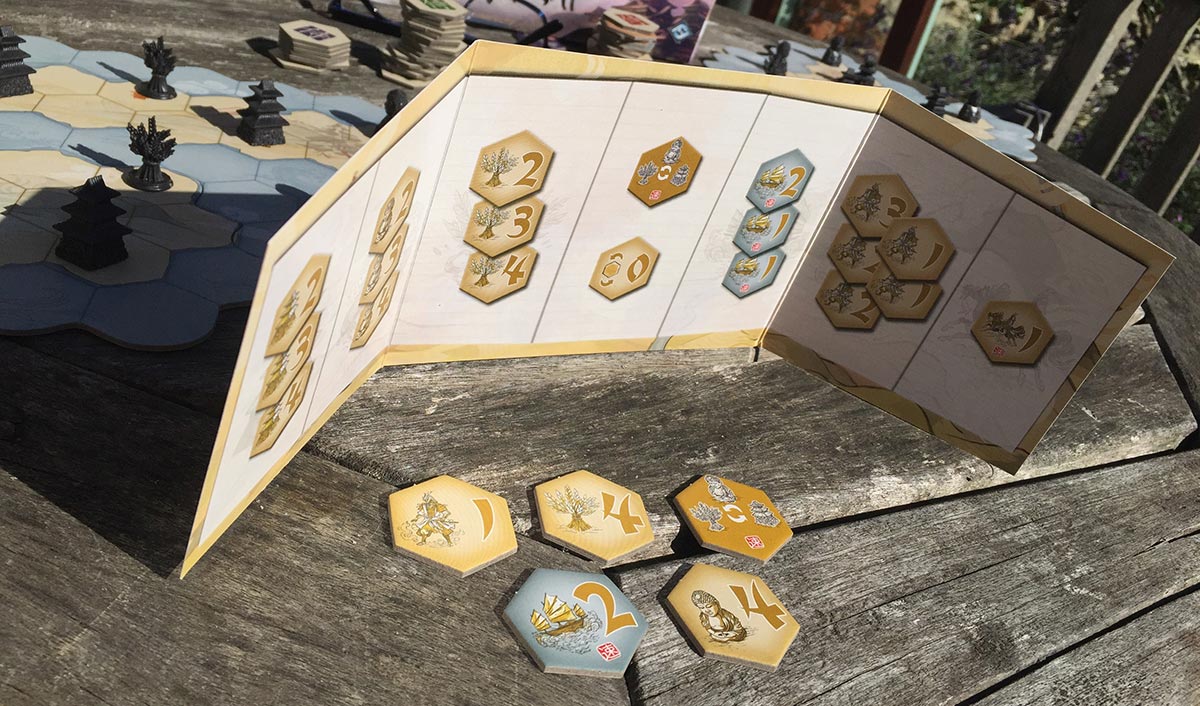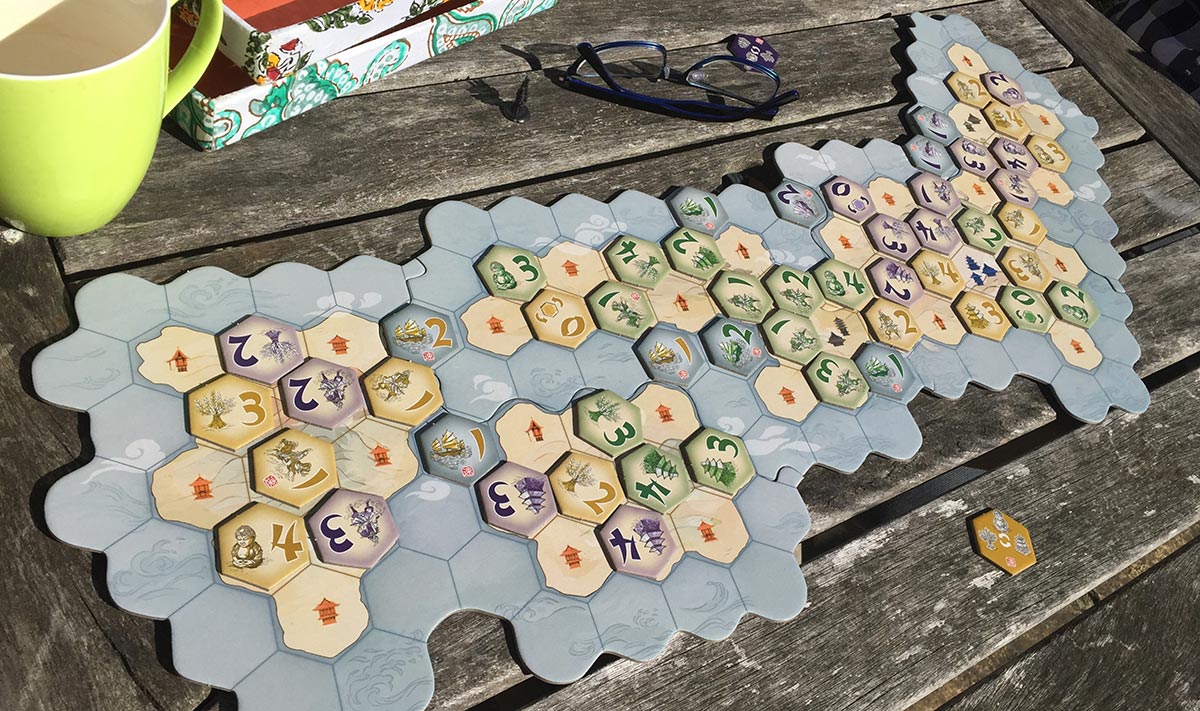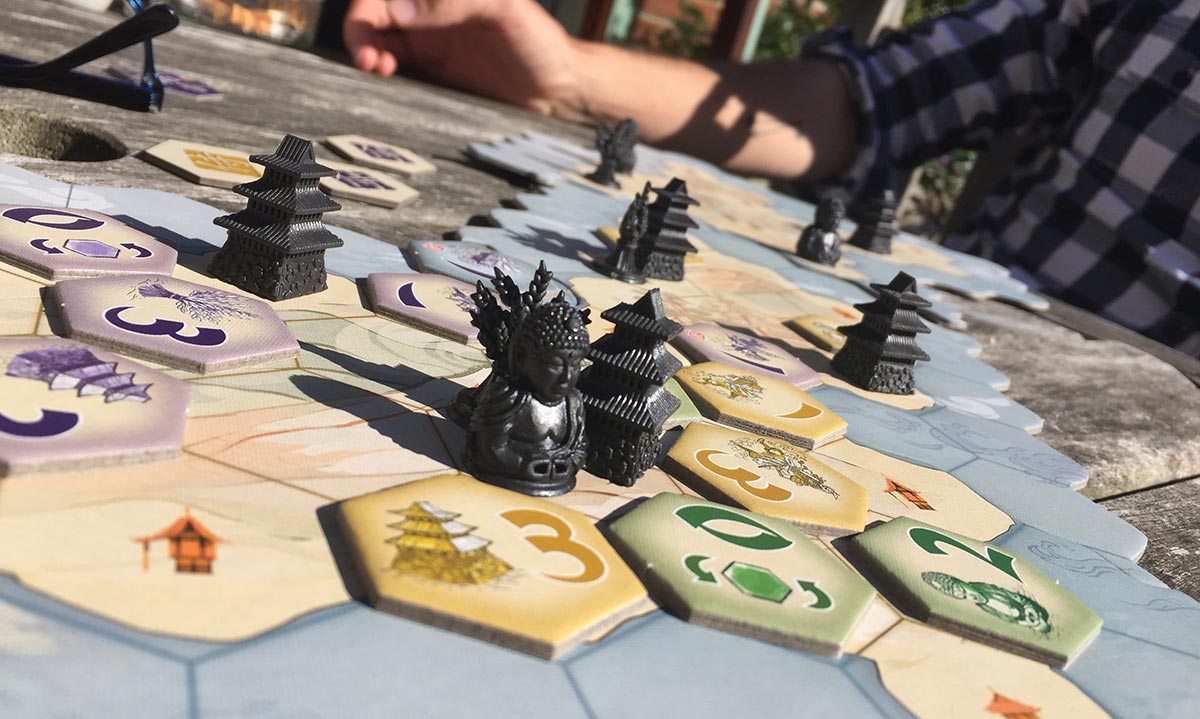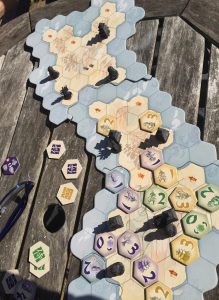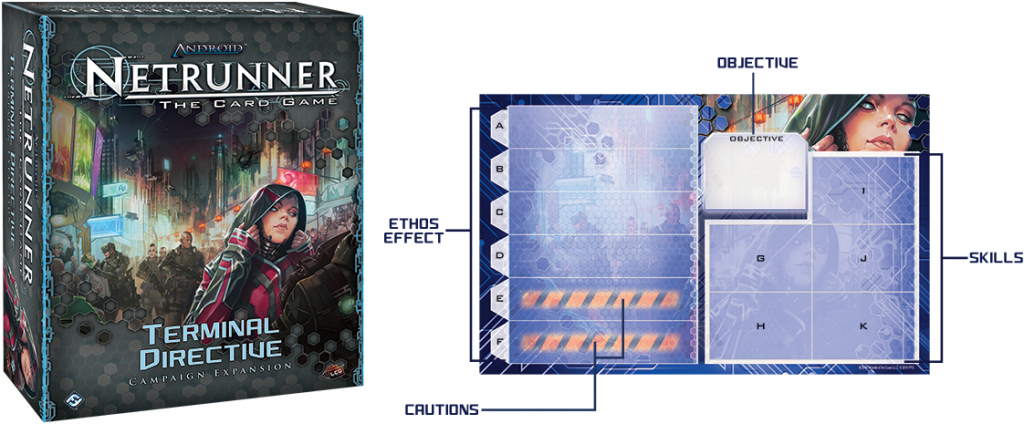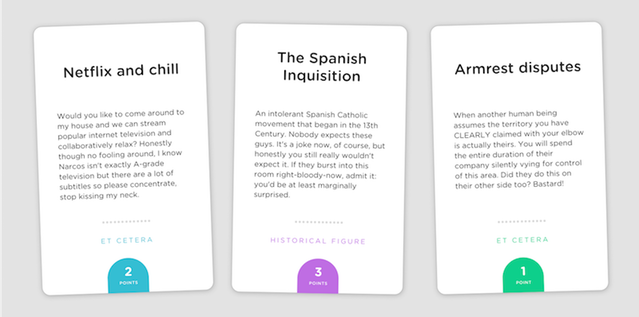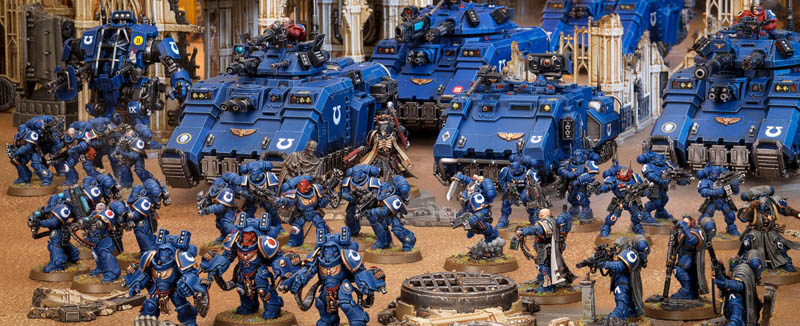Quinns: Look at it. Just look at it.
Fantasy Flight’s new edition of 1998 Reiner Knizia classic Samurai arrives in the next few months. Now, this site has traditionally poked fun at Knizia, which is to say we’re still waiting on the proof that he isn’t some kind of extra-terrestrial. The man has four hundred and fifty designs to his name, his obsession with simplicity means the less-good ones are breathtakingly dull, and then there’s this video he made for the 2015 Global Game Jam. We’ve discussed it at length, and we’re pretty sure that’s not a green screen and he really is transmitting from inside the game dimension.
But we still took home an advance copy of Samurai from Gen Con, and we did it for two reasons. One, it might be the prettiest board game I’ve ever seen. And two, a fan approached me at FFG’s booth when he saw me looking it.
“This is the good Knizia game,” he whispered conspiratorially.
He was not wrong.
Samurai is (of course!) very simple. 2 to 4 players first assemble a Japan of a suitable size using the game’s modular board. Players then seed every town on the island with “Caste” playing pieces depicting rice, castles or smiling Buddha heads. These are what you’ll be battling to collect, which is great, because even if it wasn’t in the rules you’d want to steal these little chunks of plastic and stash them away.
Each player then reaches behind their secretive player screen and flips five of their hexagons face-up. You’re now ready to play the game of Samurai! Or as I call it, Don’t You Dare Put A Hexagon There You Son Of A Bitch: Oh My God You Put A Hexagon There.
On your turn you simply pick one of your five flipped hexes and put it anywhere on the board. If any of the tasty Caste pieces are now surrounded, you pick them up and give each to the player who has the highest numerical total touching it.
This is tricky, because most of your hexes have pictures of rice, castles and Buddhas on, and so only contribute numbers to one of the three Caste types. Each player also gets some “Fast” hexes, which are crap but that you can play in addition to a normal hex on your turn.
Finally, there are exactly two special hexes in your stash, one that lets you swap two Caste pieces on the board and another that lets you move one of your hexes, effectively letting you play it a second time. Samurai engages because every turn is a different, succinct little puzzle based on what tiles you’re holding and where your opponents are pressuring.
You all have exactly enough hexes to completely fill Japan with lovely numbers. Once that’s done, you play the game again on a macro level; you get one point for having the most of each of the game’s three Caste tokens, and the tie-breaker is how much you have of the other caste pieces.
This is the rule that brought Samurai to life to me, winding up the game like so much clockwork. It’s not that you want to have the most Buddha pieces, say- it’s that you want the most and not any more than that, so you can dedicate yourself to claiming rice and castles, because every one of those will count.
Here, Knizia’s cleanliness and simplicity of design is a thing of beauty. The rules explanation is tiny, each turn carries weight, as players quickly fill the delightfully cramped map, and the whole thing ends with a bang (or at least the boom of a taiko drum) as everyone reveals how many of each thing they actually have behind their screen.
All of which would make Samurai a strong game. What makes me love it, though, is that despite this game’s minuscule manual, perfectly sized for a single trip to the loo, what emerges never seems to have the same shape twice (much like a trip to the– you get the idea).
Part of that’s down to the moves you’re making. Turns where you slot a weighty “5” rice tile between two pretty rice pieces carries the quiet satisfaction of making an investment. Surrounding a castle with two surprise ship tiles and a ronin makes you feel devious. Slowly encircling Edo, the game’s valuable centrepiece, carries the cool dread of planning a heist.
The board puts in work, too. Japan has islands for you to explore, all of different shapes, it has a narrow causeway and it has one wide plain, all of which require you to think a little differently and offer a different sort of tactile thrill as you fill them up. Speaking of which, the early game, with everyone making tentative moves towards what they desire the most, feels different from the opportunist mid-game where you’re building off your friends’ plays, and that feels different from the late game, where successfully claiming anything with your whatever pitiful tiles you have left feels like thievery.
Maybe I sound mad to you, waxing lyrical about a simple game of putting tiles on a thing. Maybe you suspect that Reiner Knizia has used black science to drag me into the game dimension, where an integer doing noble battle against another integer is the most wondrous spectacle.
It’s not true, though. Samurai is just a great game, and can be filed alongside Hive as a phenomenal abstract game; one that knows a bare minimum of theme is require to keep the imagination alive, while the rest of the brain is ensnared and put to work on a fiendishly difficult puzzle that’s so very simple to explain, but rewards every ounce of thought you put it into.
And then Fantasy Flight went and made it look as beautiful as it feels!
Funny thing. I’ve just noticed that Hive and Samurai are, together, the only games we’ve taken outside into the sun to photograph.
…Now that I think about it, maybe it’s not so strange after all.

